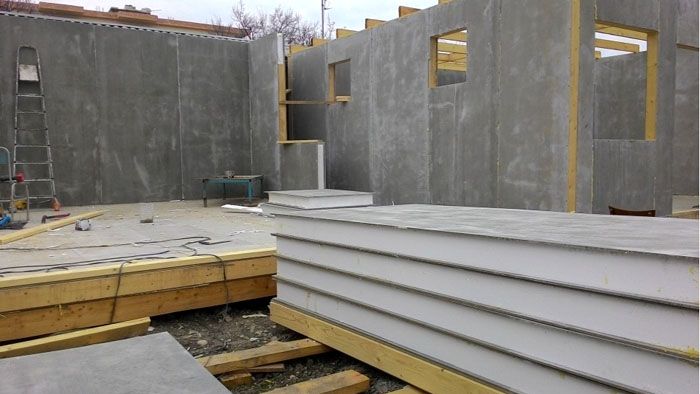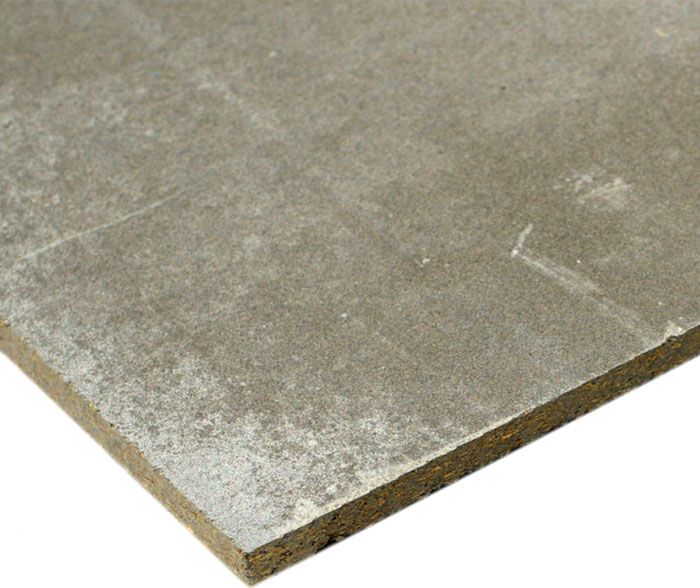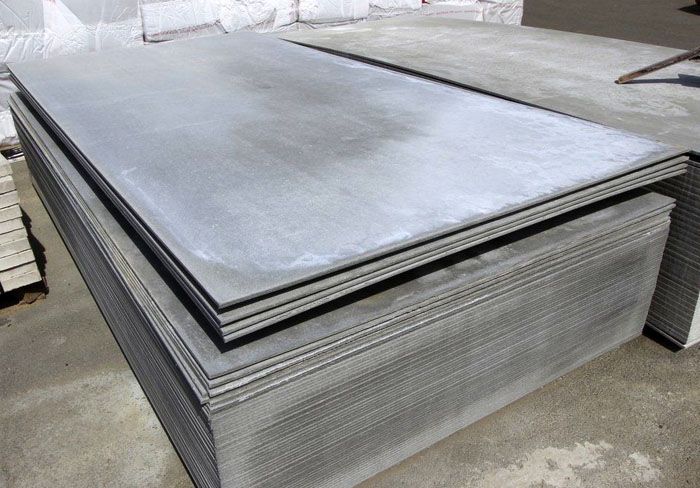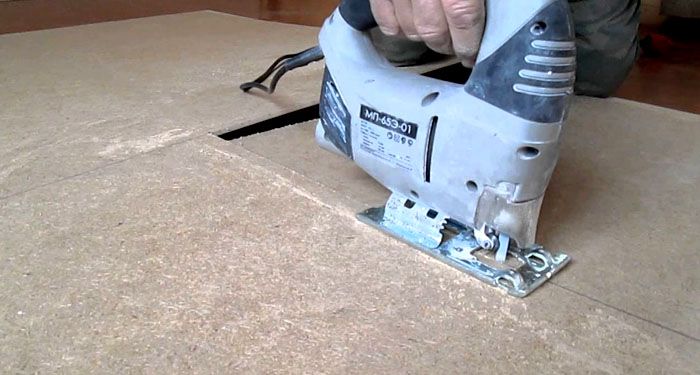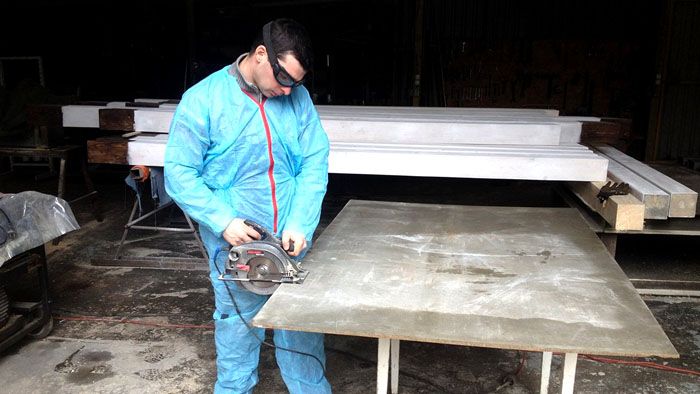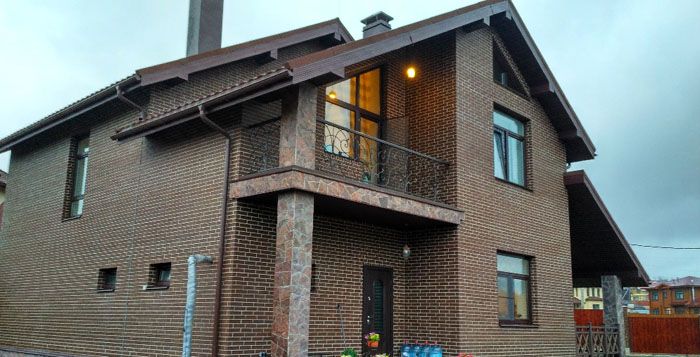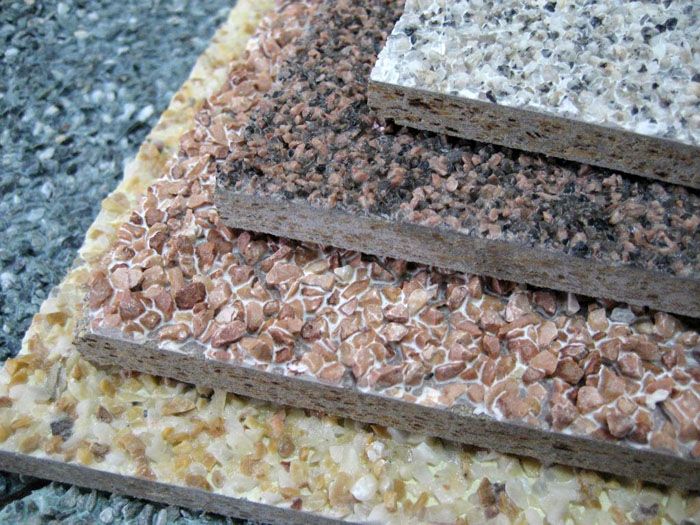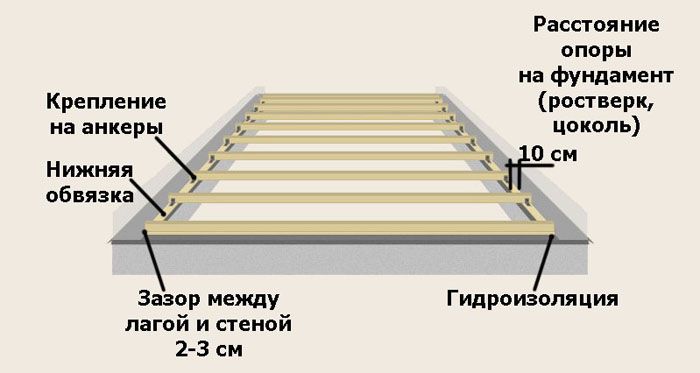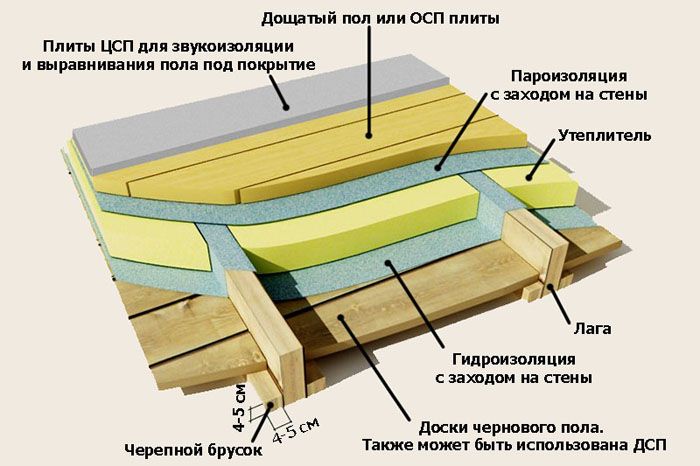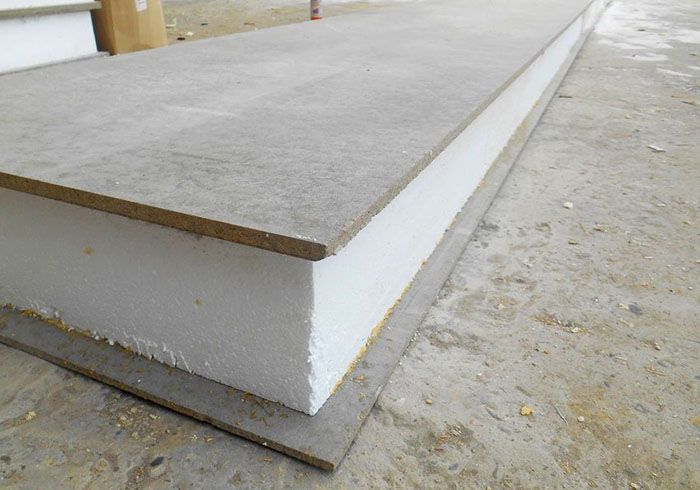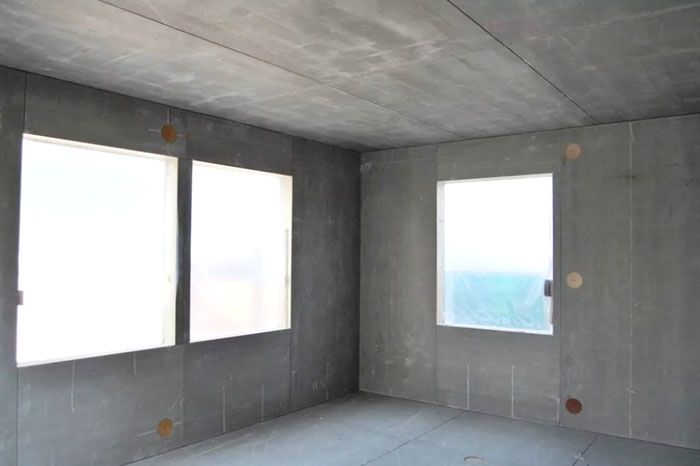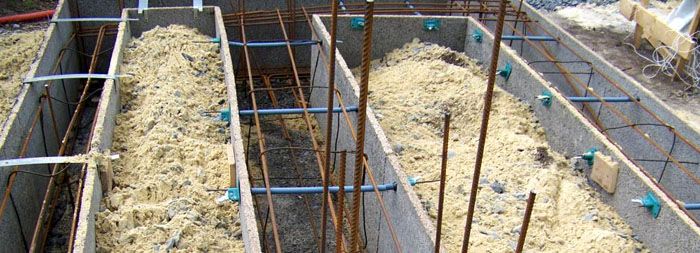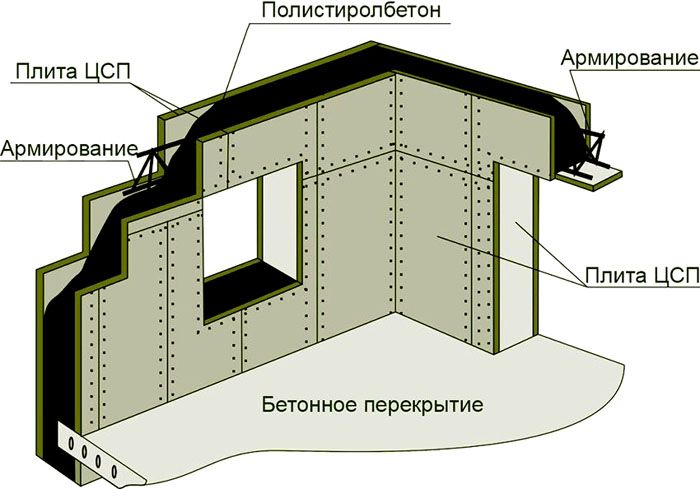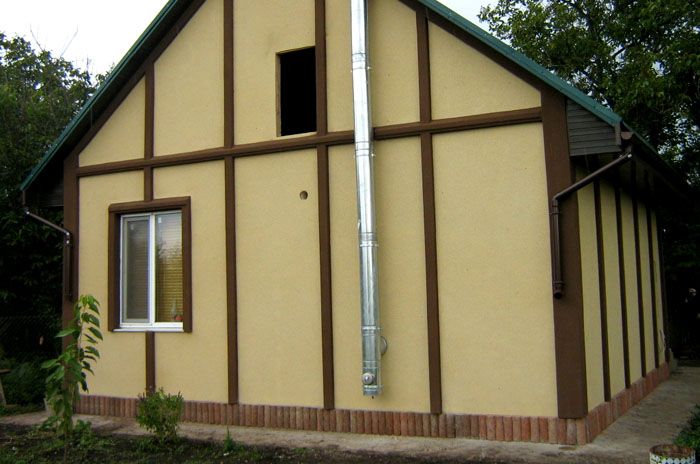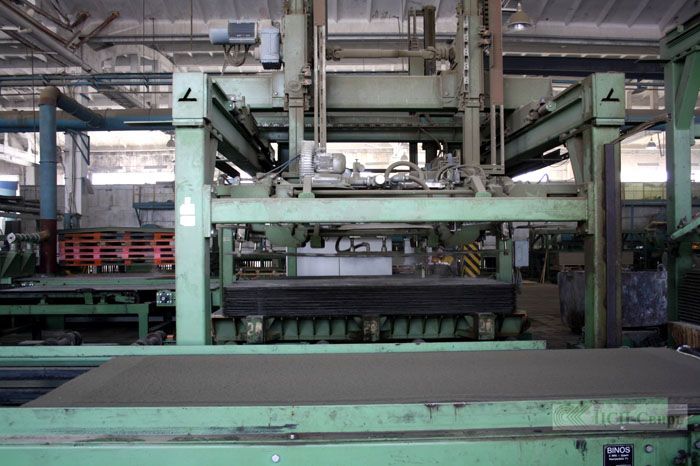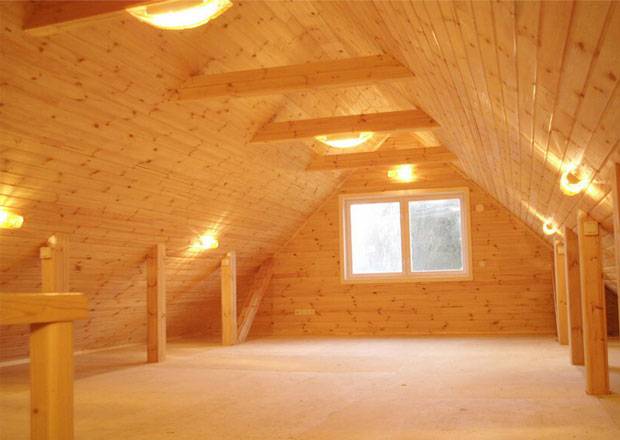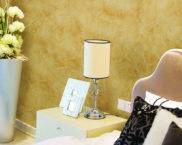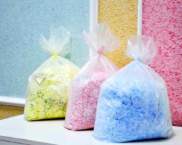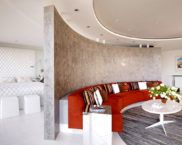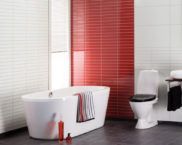Universal finishing material - DSP board. Sizes and prices, areas of application, installation features
The consumer market is rapidly conquering the consumer market focused on construction and repair work, DSP board, the size and prices of which allow it to be used for various purposes. We invite you to evaluate the advantages of a relatively new building material, study its technical characteristics, size range. You will learn about the basic rules for using DSP when facade finishing, installation of the floor, as a formwork or as a base element in production SIP panels... The features of the installation using DSP will be considered, and a brief overview of the main manufacturers of this material will be offered.
The content of the article
What is DSP
DSP is a cement-bonded particle board. In English it sounds like "cement bonded particle board". Refers to varieties of sheet composite material, focused on the use in the construction industry.
Characteristics of CBPB boards: sheet dimensions and price, thickness, weight
Due to the variety of technical parameters that meet modern requirements, cement-bonded particle boards are a serious competitor to common fibreboards, drywall, flat slate and other sheet materials.
DSP board: technical characteristics, application
The main document that regulates the characteristics and use of DSP boards is GOST 26816-2016. According to its provisions, two brands are distinguished — TsSP-1 and TsSP-2. They have some differences in the values of technical parameters.
Table 1.DSP specifications
| P / p No. | Specifications | Units | Indicators |
|---|---|---|---|
| 1 | Density | kg / m3 | 1100−1400 |
| 2 | Flexural modulus | MPa | |
| TsSP-1 | Not less than 4 500 | ||
| TsSP-2 | Not less than 4000 | ||
| 3 | Flexural strength | MPa | |
| TsSP-1 | 9−12 | ||
| TsSP-2 | 7-9 | ||
| 4 | Tensile strength | MPa | |
| TsSP-1 | Not less than 0.5 | ||
| TsSP-2 | Not less than 0.35 | ||
| 5 | Impact strength | J / m2 | Not less than 1 800 |
| 6 | Swelling in thickness due to temperature and humidity influences, measured after 20 cycles. | % | No more than 5 |
| 7 | Decrease in flexural strength due to temperature and humidity effects, measured after 20 cycles. | % | No more than 30 |
| 8 | Swelling, measured in thickness, after 24 hours in water. | % | No more than 1.5 |
| 9 | Water absorption per day | % | No more than 16 |
| 10 | Hardness | MPa | 45-65 |
| 11 | Thermal conductivity | W / (m × ˚C) | 0,26 |
| 12 | Specific heat | kJ / (kg × ˚C) | 1,15 |
| 13 | Soundproofing ability | dB | 45 |
| 14 | Flammability group | - | G1 - slightly flammable |
| 15 | Flammability group | - | B1 - difficult |
| Flammable | |||
| 16 | Flame spread index | - | 0 - no propagation occurs |
| 17 | Fire resistance limit | min | 50 |
| 18 | Smoke formation group | - | D - toxic substances are not released |
| 19 | Resistance shown when removing screws from the plate, in specific terms | N / m | 4-7 |
| 20 | Humidity | % | 6−12 |
| 21 | Frost resistance without destruction, determined by the change of thawing and freezing | The number of cycles | 50 |
| 22 | Biostability class | - | 4 |
| 23 | Surface roughness | μm | |
| polished slabs | No more than 80 | ||
| unpolished | No more than 320 | ||
| 24 | Service life (dry) | years | 50 |
The scope of application of cement-bonded particle boards is quite extensive and includes several areas:
- finishing of facades;
- decking under the roof;
- arrangement false ceilings;
- construction of ventilation ducts;
- sheathing of internal surfaces;
- facing of columns;
- base of floors.
The cement particle board is used in the production of sandwich panels. It is one of the most demanded materials in frame construction... Used in the form of window sills. It is actively used as a fixed formwork in the monolithic construction sector. From decorative slabs, reliable fences.
Weight of CBPB boards
Most often, the weight of building materials is estimated if a low-rise building is to be erected on its own. This indicator is directly proportional to the thickness and dimensions of the material.
If we consider a cement-bonded particleboard with a length of 2700 mm and a width of 1250 mm, then the weight indicators, depending on the thickness, will have the following values.
| Thickness, mm | 8 | 10 | 12 | 16 | 20 | 24 | 36 |
|---|---|---|---|---|---|---|---|
| Weight, kg | 36,45 | 45,56 | 54,68 | 72,9 | 91,13 | 109,35 | 164,03 |
| Number of sheets in m3 | 37,04 | 29,63 | 24,69 | 18,59 | 14,81 | 12,53 | 8,23 |
With a length of 3200 mm and a width of 1250 mm, the following weights will be.
| Thickness, mm | 8 | 10 | 12 | 16 | 20 | 24 | 36 |
|---|---|---|---|---|---|---|---|
| Weight, kg | 43,2 | 54 | 64,8 | 86,4 | 108 | 129,6 | 194,4 |
| Number of sheets in m3 | 35,25 | 25 | 20,83 | 15,63 | 12,5 | 10,42 | 6,94 |
Note! Analyzing the indicators, it can be noted that with a thickness of 36 mm, the slabs become 4.5 times heavier than their 8-mm counterparts. Even a 10 mm DSP weight is quite impressive, so it will be difficult for one person to work with such material.
Advantages and disadvantages of cement-bonded particle boards
The popularity of DSP is based on a wide range of advantages of this material, compared with analogues:
- Fire safety. Cement particle board finish is non-combustible. If a strong fire occurs nearby, they do not emit dangerous toxic elements.
- Multifunctionality. The ability to use the material in different roles: partitions, finishing, creating a rough base.
- Biostability.Fungi are not colonized in cement-bonded particle boards. They are resistant to the effects of rodents and various bugs.
- Frost resistance. This characteristic is of particular importance when using the material in regions with severe winters.
- Reliability. Even in conditions of frequent temperature fluctuations, the plates do not deform for a long time.
- Noise isolation. The structure of the slabs allows you to protect living quarters from external sound effects.
- Moisture resistance. Even when used for external facades, the material withstands atmospheric influences well.
- Fast installation. If a private house is being built, then finishing it with DSP is carried out at a fast pace, due to the large area of the sheets.
Among the disadvantages is the high weight of the material, which makes it difficult to use it on the upper floors without special equipment. Also, an inconvenient factor is the abundant formation of dust during the sawing process.
What and how DSP slabs are made
The composition of cement-bonded particle boards includes the following components:
- Portland cement -65%;
- wood shavings -24%;
- water - 8.5%;
- additional impurities - 2.5%.
Aluminum sulfate and water glass are used as a supplement. It is necessary to pay attention to the product passport, which reflects these indicators. Also attached is a certificate of certification, a quality certificate.
The technological process consists of several stages:
- The particle component is mixed with hydration additives.
- Water and cement fraction are added.
- The plate of the required size is formed under the press.
- It should be heated to 90 degrees and hardened under such conditions for eight hours.
The boards are then cured to obtain their final hardness values under natural conditions for two weeks. The last step is grinding, if provided by the technological map.
Plate manufacturers have special equipment, conveyor lines, comply with GOST standards, and carry out the necessary quality control.
The main sheet sizes, prices and where it is profitable to buy a cement-bonded particleboard
GOST 26816-2016 regulates two standards for the length of DSP: 3200 and 3600 mm. And also two width parameters: 1200 and 1250 mm. Among the assortment of different manufacturers, the most popular are products with a length of 2700 cm with a standard width. Thickness values, starting from 8 mm, are graduated in 2 mm steps. The GOST reflects the possibility, if necessary, to order the manufacturer for the production of plates with other dimensions.
The price of building materials also depends on the basic dimensions. Below is an overview of the cost of the most popular types of cement-bonded particle boards.
With a length of 2700 cm and a width of 1250 cm, prices vary within the following ranges depending on the thickness.
| Thickness, mm | 8 | 10 | 12 | 16 | 20 | 22 | 24 | 36 |
|---|---|---|---|---|---|---|---|---|
| price, rub. | 677− 703 | 816− 875 | 917− 987 | 1154− 1192 | 1421− 1440 | 1500− 1548 | 1560− 1580 | 1 605− 1700 |
The price with the dimensions 3200x1250 mm is the following average values.
| Thickness, mm | 8 | 10 | 12 | 16 | 20 | 22 | 24 | 36 |
|---|---|---|---|---|---|---|---|---|
| price, rub. | 714− 738 | 838− 898 | 946− 1019 | 1166− 1178 | 1419− 1576 | 1608− 1634 | 2173− 2185 | 2193− 2198 |
Price for dimensions 3600x1200 mm.
| Thickness, mm | 8 | 10 | 12 | 16 | 20 | 22 | 24 | 36 |
|---|---|---|---|---|---|---|---|---|
| price, rub. | 755− 950 | 970− 1200 | 1150− 1250 | 1360− 1550 | 1365− 1600 | 1850− 2005 | 2350− 2650 | 2700− 2885 |
Focusing on average prices, you can calculate how much modern material will cost, necessary to carry out the planned work. For example, the price of a 16 mm DSP board is 1500 rubles with a length of 3600 mm. For cladding the facade, 35 slabs are required. Therefore, you will have to spend 52,500 rubles on the purchase.
You can buy cement-bonded particleboard in stores specializing in the sale of building and finishing materials. Here you will be able to get the necessary advice on the selection of a suitable variety.
Many offers are found in online stores from both manufacturers and representatives of companies producing this modern and demanded material.
Handling rules - how can you cut DSP
Cement particle boards, which are superior in hardness Chipboard, practically do not cause difficulties during processing. They are well drilled and milled. For example, twist drills are used to drill a hole and the work is done at high speed.
If it is necessary to cut the DSP, then different tools are used at home. Be sure to wear protective goggles, a mask on the mouth and nose, since a large amount of dust is generated.

To reduce the amount of dust formation, it is recommended to irrigate the cut area with water from time to time. You can remove dust immediately with a vacuum cleaner, which must be held by an assistant.For slabs over 12 cm thick, it is advisable to use an electric disc tool.
Advice! Discs are selected that are designed to work on concrete, stone or brick. They are diamond-coated. Preference is given to a circular saw, because when working with it, less dust is generated than from a grinder.
Scope of CBPB in construction and repair
Considering the characteristics of the DSP, the scope of its application is quite extensive. When using, the recommendations for the selection of the material thickness are taken into account.
Facade decoration DSP
Facades finished with cement-bonded particleboards acquire a presentable appearance, the coating made of cement-bonded particle boards looks especially attractive.
This building material does not require additional coating, reliably protecting the building from external influences. You can purchase cladding with a stone texture, made in marble and other varieties of chips.
If the goal is insulation, then a material with a thickness of 8-16 mm is used, under which insulation is first laid. Then the lathing is formed and the facing plates are fixed. A ventilation gap is provided.
Application of DSP floor boards
DSP is becoming a popular material when laying floors. If you plan to directly lay DSP on the floor along the logs, the thickness of the material is selected in the range from 20 to 26 mm. This provides good strength with an average lag step of 0.6 meters.
The result is an even rough base, ready for finishing. Self-tapping screws are used as fasteners.
DSP 12mm is often used to level the floor structure, the structure of which is multilayer. In such a situation, logs, waterproofing are laid on the black floor, insulation, vapor barrier and a boardwalk. The next layer is DSP, providing not only a flat floor surface, but also sound insulation.
If you use DSP with a decorative face layer, you can immediately get a clean floor without the need to lay other materials on top. Use this material for installation underfloor heating... When erecting ancillary and storage facilities, laying slabs with a thickness of 24-26 mm is allowed directly on the leveled fill soil.
Production of SIP panels from CBPB
SIP panels are an improved version of new generation building materials, the basis of the structure is DSP.In the production process, a sandwich is formed, for which insulation is laid between two cement-bonded particle boards, fixed under high pressure with glue.
The resulting structure has high strength and does not require additional operations to heat the building after installation. When using high-quality types of heat-insulating interlayers, SIP panels are distinguished by their environmental safety and resistance to fire.
Related article:
This review presents the whole truth about the use of material such as SIP panels... What is it and why did they become so popular? Let's figure it out together!
Application of DSP for formwork in monolithic works
The use of DSP for the arrangement of fixed formwork, which is used in the construction of monolithic surfaces, is explained by the possibility of obtaining a reliable structure. Due to the significant dimensions of the sheets, the savings in time spent on performing all operations become noticeable.
An important criterion is the external aesthetics of the material. The finished formwork has a finished aesthetic appearance that does not require additional design steps. For this reason, it is popular for creating monolithic walls.
Features of installation and finishing of DSP
To exclude possible damage, the purchased plates are stored in a horizontal position, and transportation is carried out on the edge.When fixing the sheet, pre-drill holes in at least three places and fix the plates with self-tapping screws. For the purpose of vertical sheathing, it is recommended to use material with a thickness of 16-20 mm. Considering the high weight and significant area of the plates, it is necessary to work with them carefully in order to prevent breaking.
If additional finishing is required, then the plates are painted with varieties of silicone and acrylic-based compounds. The house, finished with painted cement particle board, takes on a stylish modern look. The smooth, dense surface without pores makes it possible to do without prior priming.

Overview of DSP manufacturers
The technology for creating cement-bonded particle boards was invented in the 1930s in America. The first factory producing this building material appeared in Switzerland in 1969.
Russian factories began production of CBPB in the eighties of the XX century. Currently, the leading manufacturer is the Tambov woodworking complex CJSC "Tamak"... Also known for large volumes of cement-bonded particle boards CJSC "MTI", located in the Kostroma region.Omsk plant belongs to large production sites "Stropan" and a company from the Leningrad region LLC "TsSP-Svir".
A number of enterprises specialize in the production of DSP for internal use, as they are engaged in the construction and decoration of buildings. Among them are LLC "Sokolsky DOK", LLC "ZSK" Republic of Bashkortostan, Tyumen enterprise LLC "Sibzhilstroy", OJSC PSK "Stroitel Astrakhan".
Video: cement particle board processing











